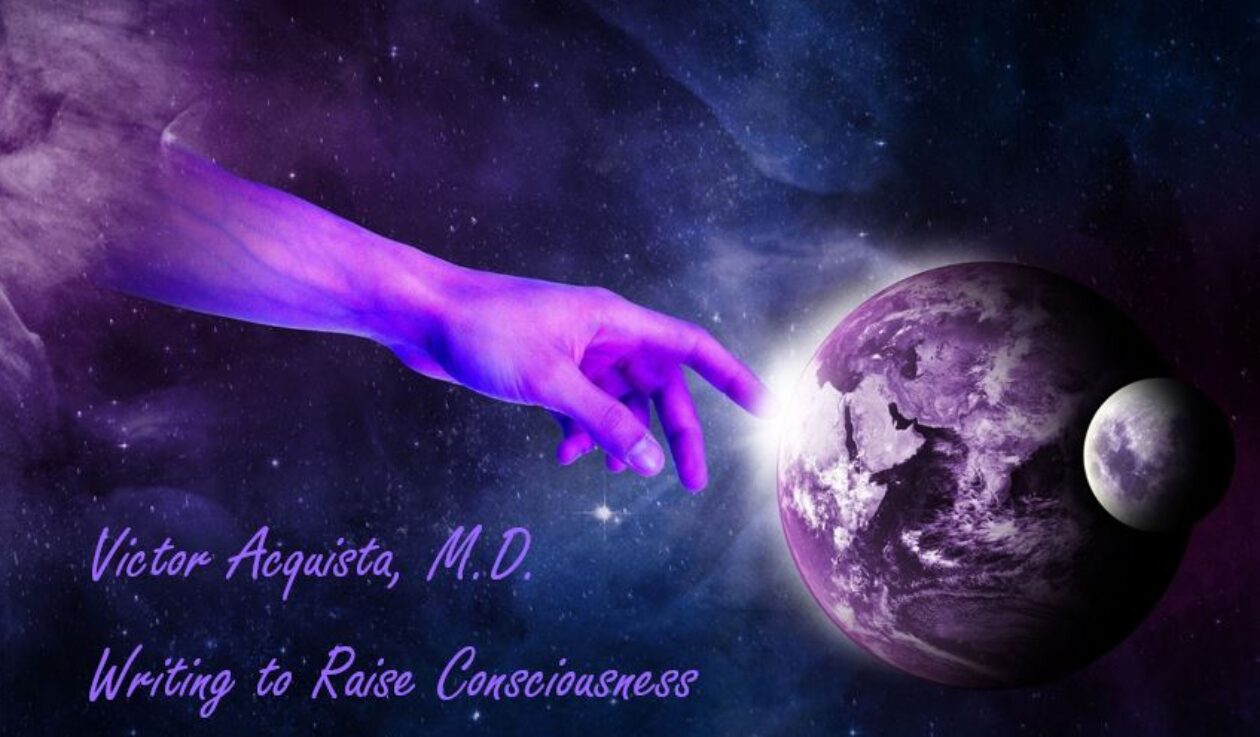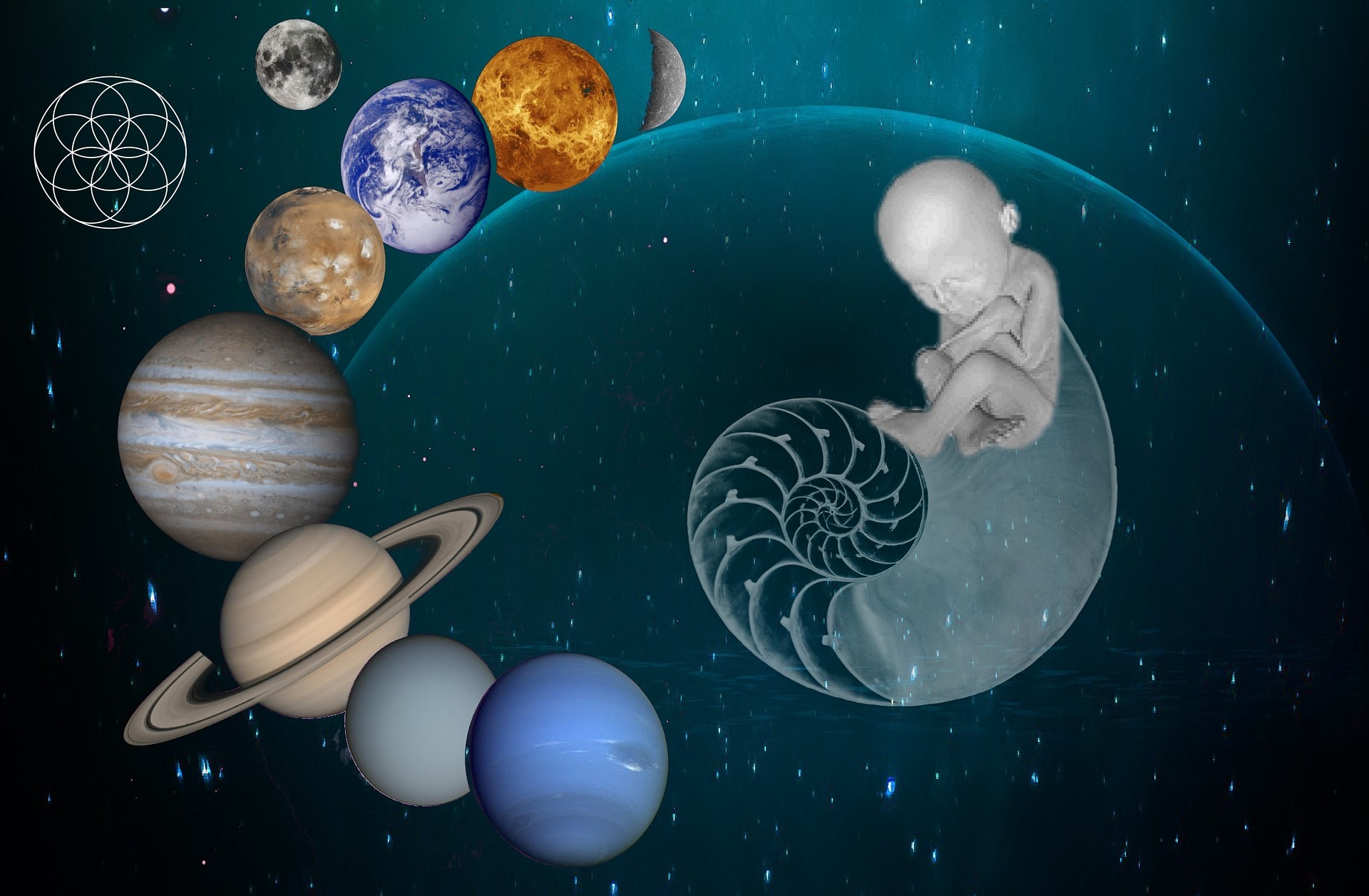My most recent column in Bizcatalyst 360:
All posts by MysticalMetaphysics and Ephemera
LIMITLESS HAPPINESS
My new column in Bizctalyst 360 is titled Veritas, the Latin word for “truth.” This short article is one of the most inspired pieces that I have ever written.

Click here: LIMITLESS HAPPINESS
[Image by Gerd Altmann from Pixabay]
WE ARE EACH HEROES AND HEROINES OF OUR OWN STORY
 Read my latest column here at this link: WE ARE EACH HEROES AND HEROINES OF OUR OWN STORY
Read my latest column here at this link: WE ARE EACH HEROES AND HEROINES OF OUR OWN STORY
Ask yourself–What’s in my story?
[Images courtesy Pixabay]
A Soul-Centered Way to Conceptualize Health
In this short article I share the soul’s perspective on health.
“As we discard old paradigms based upon separation and incorporate new paradigms based on integration, what emerges? A soul-centered conceptual framework for health provides an alternative perspective on how we can achieve better health.”
Be all that you are…
Link: A Soul-Centered Way to Conceptualize Health
Living an Authentic Life
This short article published in the award-winning BIZCATALYST 360 comes from my heart.
THE SAGA OF VENOM AND FLAME
A heroine’s journey into an ancient battle—The War of the Two Serpents
Serena Mendez is haunted and she is hunted…
… Haunted by trauma—terrified and scarred as a young child, when a secret initiation into an ancient order of Lightbringers went horribly wrong. Unaware of the power latent in her blood, she is haunted by a life out of sync with her true identity. At twenty-one, she is abrasive, jobless, in debt, and addicted to sedatives.
… Hunted by an enemy—a clandestine Brotherhood that has enslaved humanity to advance a hidden agenda of domination and control. This ruthless Brotherhood has battled the Luminarian Sects for millennia. Those serving truth and light opposed these dark forces. In return they were persecuted, burned as witches, suppressed and nearly defeated by the powers of darkness.
But the flame was not extinguished.
To unleash her latent power, Serena journeys to six continents where she uncovers the truth of who she is, and what she must do. A warrior stirs, a Lightbringer. She is Serena Mendez. She is awakening. She is a Candelaria.
Serpent Rising is a story of unfulfilled destiny, transformation, and courage to embrace the truth.
The War of the Two Serpents continues in Book Two, Revelation, as Serena and her few allies fight to prevent a mounting apocalypse of death and destruction orchestrated to establish a New World Order.
Serena has completed her Circle Training and is now a fully realized Candelaria in accord with her genetic heritage. But she is a warrior without a weapon. She must learn how to harness the power within her voice. In the Canary Islands, seven mysterious messages are stitched within the robes adorning the Virgin of Candelaria. They have never been deciphered. Uncovering the significance of these messages holds the key to survival in this thrilling race to unlock a secret that will forever change humankind.
Rich in mythology and mysticism, The Saga of Venom and Flame details the battle between truth and falsehood, light and darkness, between the masters of mind control, and the brave warriors who oppose them.
DEAR READER

Dear Reader…
There are so many aspects about Serpent Rising that I want to share with you. I write primarily because I want to share something; using story to convey a message is one way for me to do so. My intentions in writing are to entertain, to educate, and to address social themes. I try to do this by developing compelling characters, plots, and sub-plots that will engage you as a reader in thought-provoking ways.
The protagonist in this novel, Serena Mendez, is a young woman who has struggled as a result of trauma she experienced as a young child. When you first meet her, you realize how dysfunctional she is. Serena has yet to discover the root cause of her troubles as living out of sync with her true destiny as a champion for truth, a Lightbringer. I invite you to travel with Serena on a heroine’s journey of self-discovery and transformation to learn about and to embrace her true destiny.
The background or overarching plot is put in the context of the War of the Two Serpents, a struggle between two opposing ideologies. One faction believes knowledge and truth should be held by a select few and used to control the masses of humanity. The other faction wants knowledge to be made freely available to all. Although fictionalized, this war has been ongoing throughout human history. It is still playing out today as evidenced by fake news, propaganda, and mind-control techniques used to manipulate people. You can think of this in terms of an overarching conspiracy and that makes for exciting reading, but it calls attention to a fundamental problem: humanity is unable to easily distinguish truth from falsehood. This makes us all vulnerable to manipulation by powerful influencers that have an agenda aligned with benefitting themselves.
As you read Serpent Rising, I certainly hope that you will be routing for Serena as she tries to piece together the clues to explain her role in the great War of the Two Serpents. As she undergoes a succession of mystical chakra openings that each bring her closer to realizing her full potential as a Candelaria, a warrior for truth, she must also evade capture by the ruthless secret Brotherhood that opposes all Luminarians. They know the power latent in her blood, even though Serena has yet to discover this.
The struggles Serena contends with are familiar to all of us, myself included. We all want to realize our full potential and to shine our light in the darkness. How can you be a Lightbringer and Luminarian in your own unique way? For myself, I answered this question in the opening paragraph–I share myself by writing. I am grateful to you, dear reader, for giving me the opportunity to share myself with you.
Be a warrior…
Love and light,
Victor Acquista
Writing to Raise Consciousness—Meaning, Method, and Intent
 Writing to Raise Consciousness—Meaning, Method, and Intent
Writing to Raise Consciousness—Meaning, Method, and Intent
What does it mean to write something in order to raise consciousness? What method or process does this entail?
Since “Writing to Raise Consciousness” is my author tagline, the branding that captures my writing, I have thought long and hard about the questions I just posed. I’ve also thought long and hard, and continue to do, about what consciousness actually is. I write both fiction and nonfiction, as a result, it might seem challenging to wrap both types of writing into the same brand. It seems hard to wrap your brain around this entire notion of writing to raise consciousness. Eyebrows raise, faces morph into puzzled expressions, and people ask the obvious: “What do you mean? Please explain…”
Ask ten people to define “consciousness” and you will likely get ten different answers. Even among scholars who study consciousness from scientific, philosophical, and metaphysical perspectives, there is little agreement about what consciousness actually is. Without agreed upon definitional characteristics, how do I attempt to raise or elevate something we are not clear about and may not even be able to measure or quantify at all? It isn’t like raising the temperature of something through a process of heating. It isn’t like explaining how to raise chickens in your backyard. Physics and animal husbandry have ways of addressing those processes.
The good news is you don’t have to understand what something is in order to measure it. You don’t have to understand what happens to kinetic energy and all the physics underlying temperature to measure an object’s temperature. You put a thermometer in it and take a measurement. The bad news is some things can’t be measured. In the song lyrics, “I love you more today than yesterday,” how is love measured? It isn’t quantitative. Objects can be measured. Temperature is an objective quality. We have many tools to objectively measure things. A ruler measures distance. A scale measures weight. What is love and how do you measure it? It’s rather subjective how much you love another person today in comparison to yesterday. Subjective “things” aren’t actually things. We do have qualitative ways of talking about these subjective feelings. I am sadder today; I am the happiest I have ever been; I am the angriest I have ever felt–all these statement have the language of some underlying means of measurement, but there are no units of sadness, happiness, and anger that we can actually measure.
Is this a blind men problem—trying to describe an elephant, each with only a fragmented understanding? Is this some sort of dark matter/dark energy construct—useful in trying to understand something we really do not understand? Am I deluding myself in thinking I can write “stuff” that is going to actually raise consciousness? To complicate matters further, while playing my own Devil’s Advocate, if one believes consciousness is infinite and beyond constructs of space and time, then you cannot raise, elevate, expand, or increase it in any way. X + infinity still = infinity. In some ways, it is a thorny thicket. Consciousness might be entirely subjective, like love. That doesn’t preclude us from talking about how to be more loving, or writing about the topic of love to help people to open up their hearts. Or, consciousness might be something objective such as energetic frequency. For me, and more importantly for my writing intentions, it doesn’t matter. I don’t feel there is any necessity or requirement to measure the results of my efforts to raise consciousness by writing.
Despite these measurement issues, I do not back down from my intent to raise consciousness through my writing, nor do I move from my belief that I can actually do so. The method to achieve this works at different levels. It also hopefully works on both individual and collective consciousness.
The first level is rather simple and straightforward. It pertains to raising awareness. There is widespread agreement that a relationship exists between consciousness and awareness. Precisely what that relationship is can be difficult to say with certainty, but for purposes of this explanation, let us simply posit that awareness and consciousness are related. If I write something about a particular social ill such as violence, or racism, or human trafficking, and my writing (fiction or nonfiction) calls attention to this social ill, makes people more aware of the problem, I have raised consciousness at this level.
There is a long history of literature calling attention to social injustice. To name a few examples:
- The horror of war—Johnny Got Your Gun
- Racial prejudice—To Kill a Mockingbird
- Exploitation of immigrants—The Jungle
There is another type of ‘calling attention to an issue’ that goes beyond social ills. Authors often write about potential problems that might occur in order to raise awareness, to get readers to think about a particular issue. What if artificial intelligence got out of control as in Terminator? What would an Orwellian 1984 future of government control and propaganda be like? These topics are often explored in speculative fiction. Robert Heinlein, one of my favorite science fiction authors, often addresses social themes in his writing. In many ways, his writing helps to raise consciousness at this first level. My science fiction novel, Sentient, calls attention to certain social themes. Isolation/separation and how this contributes to competition over cooperation, how we treat people with mental illness, and acculturation to violence are just a few of the issues I touch upon. In my nonfiction book, Pathways to Health, I am asking readers to think about health in a different way, to recognize the distortions and limitations that characterize our beliefs about our own health and how we can achieve better health. In my two-book adventure-thriller, The Saga of Venom and Flame, the underlying theme has to do with humanity’s difficulty distinguishing truth from falsehood and the recognition that this makes us vulnerable to lies, distortions, propaganda, and manipulation. I am calling attention to this in an effort to raise awareness, bring this issue of manipulation by truth distortion into sharper focus. Getting readers to think about all these various issues is my intention. I don’t need to measure whether or not I succeed.
What underlies this first-level approach to raising consciousness is to call attention, to get the reader to notice or to think about something in an introspective way. The process is one of raising awareness in order to effect change. The change may be in a belief, an action or behavior of some sort. Change is the key word in this effort because it leads directly to the second level, i.e., evolution. I’ll loosely go with a broad definition of evolution as the gradual development of something. It is change over time plus development towards something. In this sense, writing to raise consciousness represents an effort to support and promote the evolution of consciousness both on an individual and collective level.
This type of development follows a sequence, much the same as a child first learns to crawl, then walk, then run. This represents increasing motor skill and developmental maturity. On a psychological level, the ego develops along a sequence of self-centered “me” to expanding awareness of others–family, nation, the world, the universe. This is a natural progression of awareness and an evolution of consciousness. This change is accompanied by new ways of thinking, believing, and behaving.
A similar developmental sequence occurs as part of spiritual growth and maturation. Some teachings explain this spiritual evolution as following a path toward enlightenment. I am particularly fond of Integral Theory and how it characterizes the different stages of growth and development along a psycho-spiritual evolution (outward) and involution (inward) path. I am also fond of David Hawkins’ Map of Human Consciousness that delineates characteristic thoughts, beliefs, and actions accompanying each developmental stage of the evolution of consciousness. When I write, sometimes I intend to raise consciousness by getting readers to think differently, to challenge beliefs, in order to assist them in expanding and growing in their consciousness. In some ways this represents personal growth and transformation toward a higher level of consciousness. I have often had this experience myself when reading the wisdom of a variety of spiritual teachers. Some of the chapters in my book, Health Wise—Integral Lessons in Transformation, are specifically targeted towards raising consciousness at this second level.
I’ll touch upon the third level more briefly. I also write with the intention of raising consciousness in a much more expansive way. My explanation thus far has focused on raising awareness and consciousness at the individual level and more broadly at the collective level of society. I also believe that there is a planetary aspect to consciousness that also follows a developmental or evolutionary sequence. The term, “noosphere” was first coined by Teilhard de Chardin. Merriam Webster defines noosphere as: “the sphere of human consciousness and mental activity especially in regard to its influence on the biosphere and in relation to evolution.” Others view it as even more expansive and inclusive of the entire planetary body, and everything on and around our planet.
Basically, you can think of this as not only our species’, but the entire planet’s collective consciousness. It includes what Jung described as the collective unconscious. Such consciousness exists as part of an entire cosmic consciousness. Our planet’s noosphere is evolving towards an expanded capacity as part of the natural evolution of planetary consciousness. This theory/belief is expounded upon in some detail by José Argüelles in his book, Manifesto for the Noosphere. Reading and thinking about the information in this book has helped to raise my level of consciousness.
Many have written about the great shift in consciousness occurring during these times. Rather than writing about this shift, or about the noosphere, I am writing with the specific desire of facilitating the shift to occur, to making my small contribution towards the evolution of our planetary consciousness. My individual consciousness, my thoughts and behaviors, and specifically my writing are all generally intended to promote the expansion of the noosphere. Widespread telepathic communication is a feature associated with a more evolved noosphere. The kind of connectivity we enjoy now is a feature of the technosphere, an evolutionary stage that precedes the noosphere. All of our thoughts have an energetic basis. All of our thoughts contribute to the noosphere of the earth. Still, whether or not anyone reads anything that I have written, anything that I do, write, or even think potentially influences the collective planetary consciousness at this third level. Thoughts are powerful. Words are powerful. Thoughts and words influence our collective consciousness. My intent in taking my thoughts and putting them into words is to contribute to the great shift in consciousness occurring at the individual, collective, and planetary levels.
Complicated…straightforward…perfectly muddy? I don’t expect the typical reader to really understand what I mean by, “Writing to Raise Consciousness.” In some ways, it doesn’t matter if a reader understands my intent, my goal. What matters to me is whether or not something I have written has the intended outcome. Does it work? Am I successful in achieving my goal? I don’t know for sure, but if you are at least thinking about these things, feeling a bit introspective, wondering about your own consciousness or the greater collective consciousness, then perhaps I have had some small success. I think of this effort applied in three different dimensions at which I can potentially raise consciousness. In some small way, I hope what I have written has been instrumental in raising your consciousness…
(revised 3/12/2023)
What is a Metaphysician?
Link to Wellness Universe Post
I am sometimes asked, “What exactly is a metaphysician?”
My answer to this is that the term has several layers of meaning. I have not come across these layers parsed out in a cogent way, but I have spent considerable time in arriving at an answer that captures the various dimensions of meaning as I understand them.
Catherine Collautt, Ph.D. explains her work as a metaphysician thusly: “A metaphysician is a doctor/healer who makes changes in the physical world through metaphysical (i.e. decidedly not ‘physical’) principles. As a metaphysician, I work the principles of mind (and beyond) to create powerful and lasting change in peoples’ lives…I am a practicing philosopher and healer, a metaphysician in both senses of the word.”
Her explanation provides a good starting point to explore this topic further.
Philosophical
Wikipedia cites Metaphysics as a branch of philosophy concerned with explaining the fundamental nature of being and the world. From this philosophical perspective, a person who studies metaphysics is called a metaphysicist or a metaphysician. This is straightforward and in philosophical terms pertains to the study of first principles, the fundamental principles underlying everything, i.e. the ultimate nature of the universe.
Spiritual
The Spiritual Arts Institute has a somewhat different definition:
Metaphysics, which literally means “that which comes after the physical,” is the study of the spiritual root of physical life. In this way, metaphysics shares similar goals with other noble studies such as general spirituality, theology, philosophy, mysticism, theosophy, and ontology. This sacred undertaking follows a global tradition that goes back to time immemorial and is making a strong resurgence in modern times.
To the metaphysician, we are immortal souls, seeds of the divine who are created and sustained in love by God. This is our true nature. It is our soul that gives us our life and our consciousness. To achieve its full power and splendor, each soul must go through the process of spiritual evolution, gradually maturing into a fully developed, divine being. (http://spiritualarts.org/about-us/what-is-metaphysics/)
Medical
The prefix “meta” is Greek in origin (μετά-) and means “after” or “beyond.” In this sense and applying this prefix to levels of meaning suggests something beyond a traditional physician. Used in this manner, a metaphysician would have a degree of understanding, training, and/or thinking that is higher, or in some way outside the boundaries of what is typically associated with being a physician.
Merriam-Webster defines “physician” as, “a skilled health-care professional trained and licensed to practice medicine.” In my own case, I am an internist, trained in Allopathic or typical Western medicine. My practical application in using the term” metaphysician” medically, captures my ongoing quest to understand the fundamental principles of health and healing across many different traditions, healing arts, and modalities. Western medicine approaches incorporate a valid, yet biased methodology to health, wellness, and healing. I have studied a variety of other approaches and see value and truth in many non-Western modalities. In this sense, I have gone beyond my traditional training.
Integral
Integral Theory has itself been referred to as a meta-theory, i.e. a theory about theories. A fundamental principle of integral approaches is that they transcend and include other philosophical and theoretical approaches into a higher order system. The German philosopher Hegel described a dialectic of opposing ideas as a thesis and an antithesis. Integral represents the synthesis of these opposing ideologies into a unified coherent framework representing a higher order of understanding.
Scientific and spiritual explanations about the nature of the universe represent a dialectic and are frequently viewed as irreconcilable approaches. Both are subsumed in an Integral framework that transcends and includes the truths inherent in both scientific and spiritual ideas and beliefs about life, the universe, etc. In this sense, an “Integralist,” such as myself, would also be a metaphysician.
I feel a sense of fellowship with Dr. Collaut in both her description and application of what it means to be a metaphysician. But for me, it goes beyond the philosophical and medical aspects she describes. There is a certain hubris in my being a self-proclaimed metaphysician; however, I use the term with humility. The term, as I have described it, rather elegantly incorporates some of what I have come to understand about myself. In this brief post, I have tried to capture the many levels of meaning that resonate for me and delineate several dimensions simultaneously encompassed in the term, “metaphysician.






